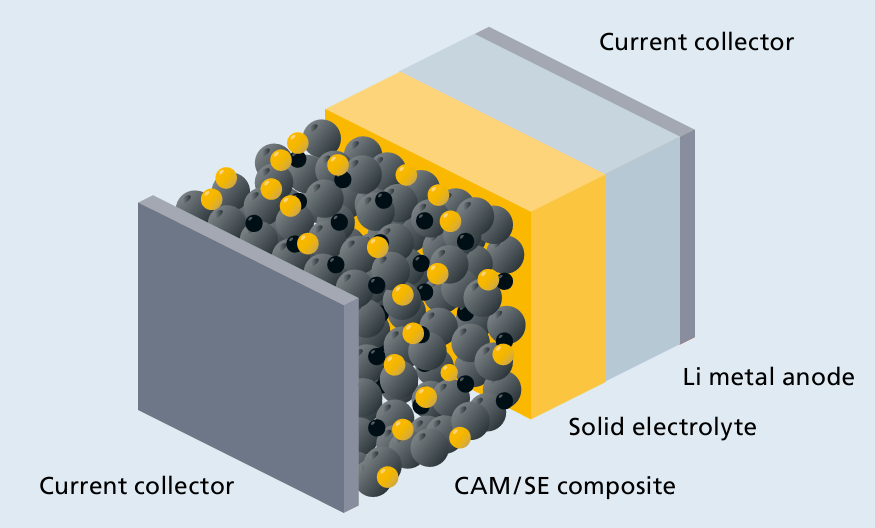Best Waste Management Stocks To Follow Now – November 13th – MarketBeat

Analysis of Key Waste Management Sector Corporations and Their Contribution to Sustainable Development Goals
Introduction: The Role of Waste Management in Achieving Global Sustainability
The waste management sector plays a critical role in advancing the United Nations Sustainable Development Goals (SDGs). Companies operating in this industry are integral to creating sustainable urban environments, promoting responsible consumption, and mitigating climate change. Their services, which include collection, recycling, waste-to-energy conversion, and hazardous material disposal, directly support several key SDGs. This report analyzes seven prominent companies in the waste management sector, highlighting their operational focus and alignment with global sustainability targets.
-
Waste Management, Inc. (WM)
- Core Operations: Provides comprehensive environmental solutions, including waste collection, transport, and operation of transfer stations, material recovery facilities (MRFs), and landfills across the United States and Canada.
- SDG Alignment:
- SDG 7 (Affordable and Clean Energy): Actively contributes by capturing landfill gas, a potent greenhouse gas, and converting it into renewable natural gas for electricity generation.
- SDG 11 (Sustainable Cities and Communities): Provides essential municipal services that are fundamental to the health, safety, and sustainability of urban and residential areas.
- SDG 12 (Responsible Consumption and Production): Operates MRFs to facilitate recycling, promoting a circular economy and reducing the demand for virgin materials.
- SDG 13 (Climate Action): Mitigates climate impact through methane capture and the promotion of recycling over landfilling.
-
GFL Environmental Inc. (GFL)
- Core Operations: Offers a diverse range of services including non-hazardous solid waste management, liquid waste management, and soil remediation for municipal, residential, commercial, and industrial clients in Canada and the United States.
- SDG Alignment:
- SDG 6 (Clean Water and Sanitation): Manages liquid waste and provides soil remediation services, preventing contamination of water sources and restoring land.
- SDG 11 (Sustainable Cities and Communities): Supports community sustainability through reliable collection, transfer, recycling, and disposal services.
- SDG 12 (Responsible Consumption and Production): Advances sustainable production patterns by managing industrial waste streams and facilitating recycling.
-
Custom Truck One Source, Inc. (CTOS)
- Core Operations: Supplies specialty equipment for rental and sale to critical infrastructure industries, including waste management, electric utilities, and telecommunications.
- SDG Alignment:
- SDG 9 (Industry, Innovation and Infrastructure): Acts as a key enabler by providing the specialized machinery necessary for building and maintaining resilient infrastructure, which is foundational for the waste management sector to achieve its sustainability objectives.
-
Concrete Pumping Holdings, Inc. (BBCP)
- Core Operations: Provides concrete pumping services and, through its Eco-Pan brand, offers industrial cleanup and waste containment services, particularly for the construction industry.
- SDG Alignment:
- SDG 11 (Sustainable Cities and Communities): Contributes to sustainable construction practices by providing solutions for managing and containing waste on-site.
- SDG 12 (Responsible Consumption and Production): The Eco-Pan service directly addresses the need for environmentally sound management of construction waste, preventing soil and water contamination.
-
Avalon Holdings Corporation (AWX)
- Core Operations: Specializes in waste management services for industrial, commercial, municipal, and governmental clients, including hazardous and nonhazardous waste disposal brokerage and landfill management.
- SDG Alignment:
- SDG 12 (Responsible Consumption and Production): Directly supports Target 12.4, which calls for the environmentally sound management of chemicals and all wastes throughout their life cycle, by safely managing hazardous materials.
-
LanzaTech Global (LNZAW)
- Core Operations: While not detailed in the source material, LanzaTech is recognized in the industry for carbon recycling technology, transforming waste carbon into sustainable fuels and chemicals.
- SDG Alignment:
- SDG 7 (Affordable and Clean Energy): Develops alternative fuels from waste sources.
- SDG 9 (Industry, Innovation and Infrastructure): Represents a significant industrial innovation by creating value from pollution.
- SDG 13 (Climate Action): Contributes to decarbonization by capturing and reusing carbon emissions.
-
ESGL Holdings Limited (ESGLW)
- Core Operations: A Singapore-based company focused on regenerating industrial waste into circular products, utilizing advanced technologies and renewable energy in its processes.
- SDG Alignment:
- SDG 7 (Affordable and Clean Energy): Integrates renewable energy into its industrial processes, promoting clean energy adoption.
- SDG 9 (Industry, Innovation and Infrastructure): Employs innovative technologies to upgrade industrial processes for greater sustainability.
- SDG 12 (Responsible Consumption and Production): Epitomizes the circular economy by transforming waste into new products, thereby minimizing disposal and reducing resource depletion.
1. Which SDGs are addressed or connected to the issues highlighted in the article?
SDG 7: Affordable and Clean Energy
- The article connects to this goal through its description of companies that convert waste into energy. Specifically, it mentions that Waste Management, Inc. “operates landfill facilities that produce landfill gas used as renewable natural gas for generating electricity.” Furthermore, ESGL Holdings Limited is described as using “renewable energy” in its processes. These activities contribute to increasing the share of renewable energy in the energy mix.
SDG 11: Sustainable Cities and Communities
- This goal is addressed as the core business of the featured companies is providing essential environmental services for urban and residential areas. The article states that these companies “collect, transport, process, recycle and dispose of municipal, commercial, and industrial waste.” Services provided to “residential, commercial, industrial, and municipal customers” are fundamental to managing the environmental impact of cities and ensuring they are clean and sustainable.
SDG 12: Responsible Consumption and Production
- This is the most prominent SDG in the article. The companies discussed are directly involved in achieving the environmentally sound management of waste. The article details services such as “non-hazardous solid waste management” (GFL Environmental), “hazardous and nonhazardous waste disposal” (Avalon), and “soil remediation services” (GFL Environmental). The focus on recycling, with mentions of “material recovery facility (MRF)” and companies that “regenerates industrial waste into circular products” (ESGL), directly aligns with the goal of reducing waste generation and promoting a circular economy.
2. What specific targets under those SDGs can be identified based on the article’s content?
Targets under SDG 7
- Target 7.2: By 2030, increase substantially the share of renewable energy in the global energy mix. The article highlights Waste Management, Inc.’s practice of using landfill gas to generate “renewable natural gas for generating electricity,” which directly contributes to this target by creating energy from a non-fossil fuel source.
Targets under SDG 11
- Target 11.6: By 2030, reduce the adverse per capita environmental impact of cities, including by paying special attention to air quality and municipal and other waste management. The entire article focuses on companies whose primary purpose is waste management for “municipal, residential, and commercial, and industrial customers.” Their services, including waste collection, transport, and disposal, are essential for achieving this target.
Targets under SDG 12
- Target 12.4: By 2020, achieve the environmentally sound management of chemicals and all wastes throughout their life cycle… and significantly reduce their release to air, water and soil. The article mentions companies like Avalon Holdings, which provides “hazardous and nonhazardous waste disposal brokerage and management services,” and GFL Environmental, which offers “soil remediation services.” These services are crucial for managing waste in an environmentally sound manner and minimizing its impact.
- Target 12.5: By 2030, substantially reduce waste generation through prevention, reduction, recycling and reuse. The article repeatedly mentions recycling services. Waste Management, Inc. operates a “material recovery facility (MRF),” and GFL Environmental offers “recycling… services.” Most notably, ESGL Holdings “regenerates industrial waste into circular products,” which is a direct example of reuse and moving towards a circular economy, thus reducing overall waste generation.
3. Are there any indicators mentioned or implied in the article that can be used to measure progress towards the identified targets?
Indicators for SDG 7
- Implied Indicator for Target 7.2: The amount of renewable energy generated from waste. The article’s statement that Waste Management, Inc. produces “renewable natural gas for generating electricity” from landfill gas implies that the volume of electricity or gas produced could be a metric to track progress.
Indicators for SDG 11
- Implied Indicator for Target 11.6: The volume of municipal and industrial waste managed. The core business of the companies is to “collect, transport, process, recycle and dispose of municipal, commercial, and industrial waste.” The total tonnage of waste handled by these companies would serve as an indicator of the scale of waste management services being provided to cities and communities.
Indicators for SDG 12
- Implied Indicator for Target 12.4: The quantity of hazardous waste treated and soil remediated. The mention of “hazardous… waste disposal” and “soil remediation services” implies that the volume or tonnage of these specific waste streams being properly managed can be measured to track progress towards environmentally sound waste management.
- Implied Indicator for Target 12.5: The amount of material recycled and waste regenerated into new products. The article’s reference to “recycling” services, “material recovery facility (MRF),” and ESGL’s process to “regenerate industrial waste into circular products” suggests that the tonnage of materials successfully diverted from landfills and repurposed would be a key performance indicator for this target.
4. Create a table with three columns titled ‘SDGs, Targets and Indicators” to present the findings from analyzing the article.
| SDGs | Targets | Indicators |
|---|---|---|
| SDG 7: Affordable and Clean Energy | 7.2: Increase substantially the share of renewable energy in the global energy mix. | Amount of renewable energy generated from waste (e.g., from landfill gas). |
| SDG 11: Sustainable Cities and Communities | 11.6: Reduce the adverse per capita environmental impact of cities, including by paying special attention to… municipal and other waste management. | Volume of municipal, commercial, and industrial waste collected and managed. |
| SDG 12: Responsible Consumption and Production | 12.4: Achieve the environmentally sound management of chemicals and all wastes throughout their life cycle. | Quantity of hazardous waste treated and soil remediated. |
| 12.5: Substantially reduce waste generation through prevention, reduction, recycling and reuse. | Amount of material recycled and volume of waste regenerated into new products. |
Source: marketbeat.com
What is Your Reaction?
 Like
0
Like
0
 Dislike
0
Dislike
0
 Love
0
Love
0
 Funny
0
Funny
0
 Angry
0
Angry
0
 Sad
0
Sad
0
 Wow
0
Wow
0


















































.jpg.webp?itok=0ZsAnae9#)





/environment-climate-change-and-health-(ech)/water-sanitation-hygiene-and-health-(wsh)/landfill-tuvalu-36092.tmb-1200v.jpg?sfvrsn=5c21fe40_1#)


















